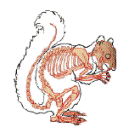
Lee Bowman in House by the River (dir. Fritz Lang, 1950).

Louis Hayward.
Louis Hayward plays Stephen Byrne, a dissolute writer who accidentally kills his attractive young maid Emily (Dorothy Patrick) in the act of trying to rape her, and must enlist the aid of his (usually) morally upstanding but wooden-legged brother John (Lee Bowman) in hiding the evidence. To complicate things, Stephen's wife Marjorie (Jane Wyatt) and John are secretly in love with each other. What lifts this out of the trough of garden-variety gothic melodrama, besides George Antheil's score and Edward Cronjager's cinematography, is Hayward's creepy performance as Stephen, who is all the more menacing for his simpering weakness: as his desperation and paranoia grows, his front of humanity steadily drops away, leaving a loathsome trapped animal. Not that he's a prize moral specimen to begin with, of course. When he stalks Emily on the stairs before squeezing the life out of her, his grinning, predatory face is a chilling mask of evil.
Bowman is not as engaging a performer as Hayward (and to be fair, his part calls for him not to be), but his character is interesting in other ways. As his brother's keeper, he is torn between his own ethics and his desire to protect Marjorie from the trauma that would ensue if the crime were discovered (Stephen lies and tells him Marjorie is pregnant). When we first meet John, he is trying to get into Stephen's house, an action that has obvious symbolic overtones in light of his feelings for Marjorie. He appears first as a shadowy pair of eyes only partly visible behind the little window on the door, sending Stephen into a panic: he is thus clearly set up as the conscience of the film, but a conscience that itself becomes complicit. This is indicative of the tortured morality of Lang's films: even those figures who represent surveillance and ideological monitoring are caught up in the complex of existential entrapment that, here as in other films, is manifested by claustrophobic corridors, cul de sacs, and dead ends. A typical device of Lang's is a long shot of the subject at the end of a hall, often closing a door against the observing world (cf. Edward G. Robinson at the end of The Woman in the Window). Throughout House by the River, Stephen and John are shown in positions of this sort, sometimes in relation to each other, as in the scene mentioned previously. Additionally, John's physical disability can be seen as a figural analogue to Stephen's crippled soul--a device that does not so much diminish our identification with John as qualify our impression of Stephen, who in this way comes off as just one more casualty. Another way of saying this: Lang tends not to have heroes or villains in the usual sense, but victims ... all victims all the time.



No comments:
Post a Comment